Radioactive Pigs, Wild Pigs, Sick Pigs: The Trouble with Pigs Today
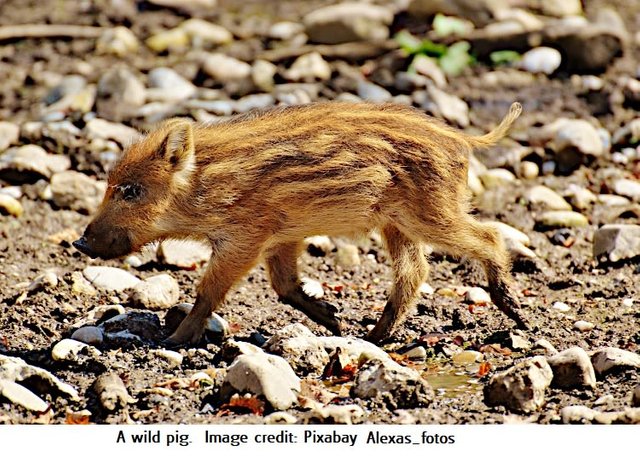

Before we get started, let's establish some ground rules. What exactly do we mean when we use the terms wild boar, pig, feral swine, and boar? Live Science offers some guidance. The word 'boar' can refer to an undomesticated pig of any gender, or it can refer to a domesticated male pig that has not been castrated. 'Hog', according to Live Science, refers to a domesticated pig that weighs more than 120 pounds. And all of the above can be called swine.

Mitochondrial DNA analysis indicates that the modern pig--boar, swine, hog, all members of the Suidae family--descended from a common ancestor in Eastern Asia about 500,000 years ago. Other members of the Suidae family include warthogs and pygmy hogs.
Common Warthog (Phacochoerus africanus) Johannesburg, South Africa
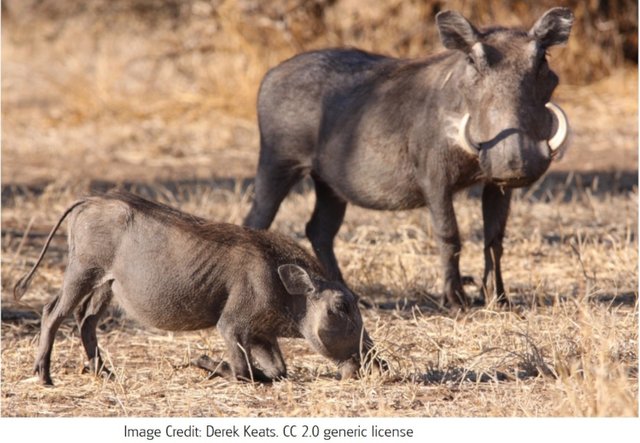
Image License Link
About 9,000 years ago, the wild boar was domesticated in at least two areas of the world, simultaneously (that's the theory). This occurred in China and in Eurasia. The boar is considered to be native to these areas.
The pig, according to the Rutgers University 4-H Animal Science Resource Blog, is one of only fourteen large animals on earth that have been domesticated. It is estimated that there are two billion domesticated pigs in the world. However, millions of pigs dying from African Swine Fever right now (in China especially--see this post by @mobbs) are cutting into this number.

What is it that makes an animal suitable for domestication? According to Rutgers, domesticated animals share four traits:
- They're omnivorous, which means they don't need meat to sustain them. Meat would be a very expensive diet and inefficient use of resources.
- They're social--not aggressive, like grizzlies, or crocodiles.
- They reproduce quickly. In the case of a pig, the gestation period is 114 days and the litters can have ten or more piglets.
- They have a hierarchical social structure. Whoever is at the top of the hierarchy is the leader. In domestication, humans place themselves at the top of that hierarchy.

The evolution of boar to pig was not accidental. It was managed by humans through centuries of selective breeding. On the genetic bridge to domestication are hybrid pigs. This hybrid bridge may be found also as domestic pigs revert to the wild. In the picture below, a family of hybrid pigs roams into territory occupied by cattle.


The answer to this question depends on where the boars are found. It has something to do with climate change, with the grey wolf kill-off, with recreational hunting, with human incursion into boar territory, and it may even be related to the disasters at Chernobyl and Fukushima.
A 2015 report from the University of Veterinary Medicine in Vienna links the expansion of wild boars to milder weather. One of the reasons given is a greater availability of crops for forage.
In the picture below, boars are shown grazing near residences in Berlin Germany. The photo is a still shot from a video that may be viewed by clicking on the link. Video/image credit: CC 4.0 license Leonhard Lenz.
Largely through deliberate activity by humans, the natural predator of the boar, the grey wolf, no longer exists in affected areas. Except for humans, the boars do not have significant natural enemies in these areas and therefore may roam safely. In Japan, where the indigenous wolf has been eliminated, the South China Morning Post reports that boars threaten to overwhelm some communities.
Map of areas in which the grey wolf no longer exists.
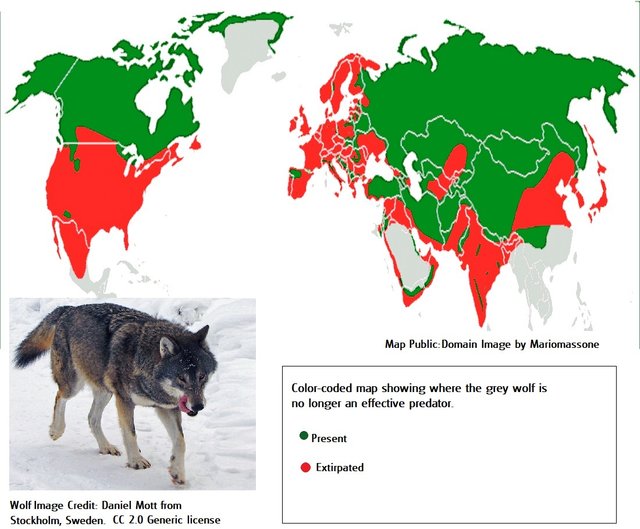
Wolf License Link
Map License License
In many areas of the world responsibility for wild boar population growth may be placed on hunters. Hunters deliberately introduced the boar as game. In some cases (the U. S., for example) the boars mated with wild pigs. The pigs had been introduced centuries before. The resultant hybrid pig is wreaking havoc in countries across the world.
This phenomenon is especially evident in Hong Kong, where people regularly run into wild boars on city streets. Apparently, boars and humans coexisted in Hong Kong traditionally, but their presence has become more obvious recently. Check out this video Authorities claim the issue is exacerbated when people feed the animals.
As you might guess, these are a legacy of the Fukushima and Chernobyl catastrophes. As people moved out of the evacuated communities, boars moved in. They foraged on contaminated plants. In the case of boars, foraging for mushrooms and truffles is a particular hazard. These food sources absorb nutrients through the environment, not their roots, so they are highly efficient at absorbing atmospheric radioactive material.
A Domestic "Truffle" Pig Is Shown Foraging for Truffles in Gignac, France.
Image License Link

According to an official Victoria State government release, the feral pig is considered a major biosecurity threat in Australia. The animal was declared an established pest under the Catchment and Land Protection Act 1994.
Official Queensland government recommendations for pig control include shooting from helicopters, poison baiting and custom built electrified fences.
Brisbane%20City%20Council%202.0.jpg)
One of the reasons pigs are so successful in Australia is that the adult boar has no natural enemy--except for humans. Piglets are susceptible to dingo and large predatory birds, but adult boar are quite protective of their young.
As is true of most countries, pigs are not native to Australia. A 1953 study by the University of Melbourne suggests that the first pigs were introduced by European explorers (including Captain James Cook). Those pigs found Australia to be very congenial and proliferated in the wild.

The experience with wild boars south of the U.S. border is variable. Mexico has experienced an 'invasion' of the animals from Texas (where the Texas Parks and Wildlife agency estimates 1.5 million feral hogs roam). However, a 2015 article in Perspectives in Ecology and Conservation from Brazil, does not strike the note of alarm sounded in the U. S. or Australia, but does recognize a problem with boars as an invasive species. There is a suggestion in the article that wild swine might serve a positive purpose. It is hoped that local residents will hunt boars instead of other animals and therefore shield the native animals from extinction.
Hunting boars in Brazil is suggested as a measure to control boar population growth.
In 2018, another study out of Brazil offered helpful insight on discouraging boar 'invasions'. Without an active eradication program, wild boars disappeared from a formerly heavily affected area. The authors of the study conclude that landscape alteration drove the pigs away. The territory, Northern Pantanal, was declared a Protected Area some years ago, and was transformed from grazing land to mostly forest. The pigs, it turns out, follow cattle because of grazing opportunities.
Overall, in South American countries, it seems that climate and the existence of natural predators (including jaguar and puma) has helped to limit boar population growth.

Wild boars are significant reservoirs of disease and pose a potential threat to animal and human health. A number of diseases have been associated with swine. Many of these diseases may be transmitted to other animals, and in some cases, to humans. Ticks are one mode of transmission.
Most recently a new threat has emerged in Brazil, where vampire bats (Desmodus rotundus) are common. Between 1% and 10% of these bats harbor the rabies virus. Images of the bats feeding on wild swine have been captured on camera.The danger of transmission to domestic animals is significant.
Vampire Bat (Desmodus rotundus)
%20Uwe%20Schmidt%204.0.jpg)
License link
Right now, African Swine Fever is killing pigs by the millions. So far, this virus has not crossed the species barrier and infected humans. However, research indicates it is possible this species leap may happen in the future.
This raises the broader issue of sick pigs, the way pigs are raised that leads to sickness, and how that sickness may affect humans.
An article in the September 2019 issue of Nature carries the headline: Alarm as Antimicrobial Resistance Surges Among Chickens, Pigs and Cattle. The antibiotics given to the animals in intensive breeding--factory farms--are the same ones given to humans. Because of the way these medicines are used in factory farms, they may no longer be effective.
There is a secondary, but no less important issue associated with factory farming. The waste produced from the animals (manure) is directed into lagoons, such as the one pictured below. In these lagoons, fecal bacteria and low levels of excreted antibiotics intermingle and resistance to the antibiotics grows--as described in this Food and Water Watch paper. Also, the waste leaches into groundwater and contaminates the surrounding community.

After writing this blog, I would have to say: the trouble with pigs is People. From the very moment that people decided to domesticate pigs and live in close quarters with them, the exchange of diseases became likely. As people moved about the globe and introduced pigs into new areas--whether for hunting or food--the natural ecological balance was disturbed. As people eliminated natural predators that might have controlled pig populations, the balance was once again disturbed. As people moved toward intensive farming and changed breeding practices to increase yield, the natural balance was disturbed. Finally, as people built nuclear energy plants that failed and contaminated wide swaths of land, the natural balance was disturbed.
Pigs have served humankind well for centuries. But there has been
limited human understanding of the pig and the natural environment pigs
and humans share. Is there a pig-related catastrophe lurking in the
future? Hard to tell. A mending of the ways is surely due in the
pig/human relationship.

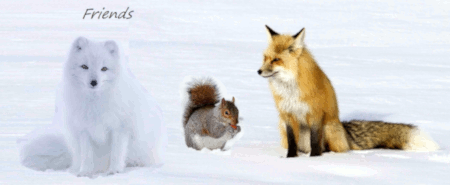

Some accent pictures are from Paint 3D

The rest of the accent pictures are adapted from Pixabay, as noted below:
Boar
Pig
Wild pig
Snake
Puma
People outline

Live Sciencehttps://www.livescience.com/50623-pigs-facts.html
4-H Animal Science Resource Blog https://4hanimalscience.rutgers.edu/2019/03/15/1747/
@mobbs https://steemit.com/steemstem/@mobbs/life-is-easy-huh--1568028371
Science Daily https://www.sciencedaily.com/releases/2015/08/150812103703.htm
Pacific Standard Magazine https://psmag.com/environment/can-wolves-save-japanese-forests
South China Morning Post https://www.scmp.com/news/asia/east-asia/article/2136652/wild-boars-are-taking-over-japans-small-towns-and-residents-are
Science for Students https://www.sciencenewsforstudents.org/article/can-anything-stop-big-pig-invasion
National Geographic https://www.nationalgeographic.com/animals/2019/04/hong-kong-urban-dwelling-wild-boars/
Beyond Nuclear https://beyondnuclearinternational.org/2018/04/29/chernobyl-boars-still-radioactive/
biosecurity threat http://agriculture.vic.gov.au/agriculture/pests-diseases-and-weeds/pest-animals/invasive-animal-management/established-invasive-animals/integrated-feral-pig-control
Catchment and Land Protection Act 1994 http://agriculture.vic.gov.au/agriculture/pests-diseases-and-weeds/protecting-victoria/legislation-policy-and-permits/legislation
Business Queensland https://www.business.qld.gov.au/industries/farms-fishing-forestry/agriculture/land-management/health-pests-weeds-diseases/pests/invasive-animals/restricted/feral-pig
National Museum of Melbourne https://museumsvictoria.com.au/media/5667/jmmv19531801.pdf
Express News https://www.expressnews.com/news/local/article/An-unwelcome-Texas-export-feral-hogs-5503065.php
Texas Parks and Wildlife https://tpwd.texas.gov/huntwild/wild/nuisance/feral_hogs/
Perspectives in Ecology and Conservation https://perspectecolconserv.com/en-current-distribution-invasive-feral-
Animal Conservation https://zslpublications.onlinelibrary.wiley.com/doi/full/10.1111/acv.12312
PlosOne https://journals.plos.org/plosone/article?id=10.1371/journal.pone.0206513
Wildlife Damage Management https://wildlife-damage-management.extension.org/feral-hog-diseases-and-health-risks/
Parasitology https://www.ncbi.nlm.nih.gov/pmc/articles/PMC5450961/
AgFax https://agfax.com/2017/02/01/dealing-with-wild-hogs-heres-the-worst-case-scenario-in-south-america/
New England Journal of Medicine https://www.nejm.org/doi/full/10.1056/NEJMp048039
Research_Journal_of_Pharmaceutical_Biological_and_Chemical_Sciences https://www.researchgate.net/journal/0975-8585_Research_Journal_of_Pharmaceutical_Biological_and_Chemical_Sciences
Food and Water Watch https://www.foodandwaterwatch.org/sites/default/files/Antibiotic%20Resistance%20101%20Report%20March%202015.pdf
NPR https://www.npr.org/2018/09/22/650698240/hurricane-s-aftermath-floods-hog-lagoons-in-north-carolina
Ancient History Encyclopedia https://www.ancient.eu/article/1320/pigs-in-ancient-china/
U.S. Department of Agriculture https://www.aphis.usda.gov/aphis/ourfocus/wildlifedamage/operational-activities/feral-swine/sa-fs-history
The Pig Site https://thepigsite.com/news/2016/10/study-finds-humans-have-selectively-bred-pigs-for-their-black-coat-1
Nature Genetics https://www.nature.com/articles/ng.3394
U. Penn http://cal.vet.upenn.edu/projects/swine/bio/fem/gest/hm.html
Compassion in World Farming https://www.ciwf.org.uk/media/5235118/The-life-of-Pigs.pdf
Christian Science Monitor https://www.csmonitor.com/2007/1029/p20s01-woap.html
Queensland Pest and Animal Strategies https://www.daf.qld.gov.au/__data/assets/pdf_file/0008/67643/IPA-Feral-Pig-Strategy.pdf
National Geographic https://www.nationalgeographic.com/culture/food/the-plate/2015/09/08/contrary-to-popular-belief-the-modern-pig-has-many-parents/
New York Department of Environmental Conservation https://www.dec.ny.gov/animals/70843.html
Diet and Predators http://www.suwanneeriverranch.com/wild-boar-diet-predators.htm
Seeker https://www.seeker.com/iq-tests-suggest-pigs-are-smart-as-dogs-chimps-1769934406.html
Cooperative Extension https://feralhogs.extension.org/natural-predators-of-feral-hogs/
PlosOne https://journals.plos.org/plosone/article?id=10.1371/journal.pone.0193295

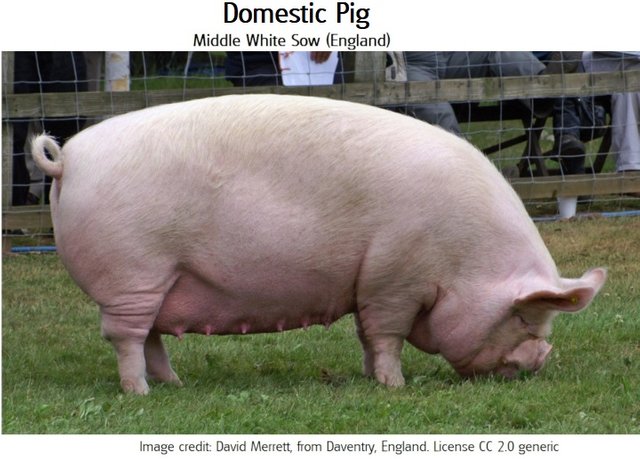
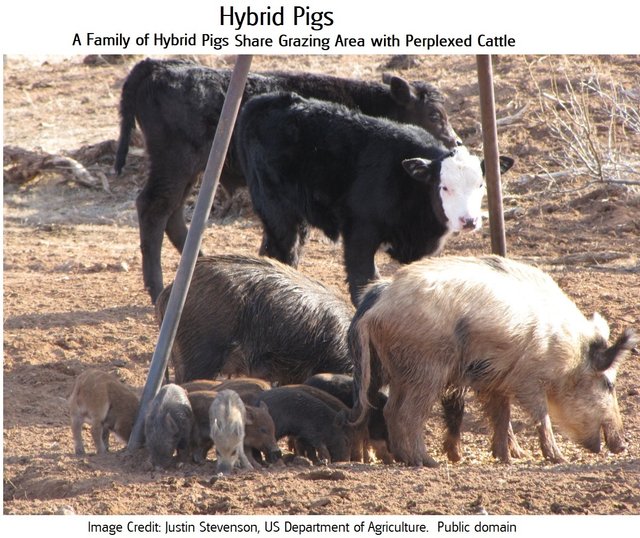
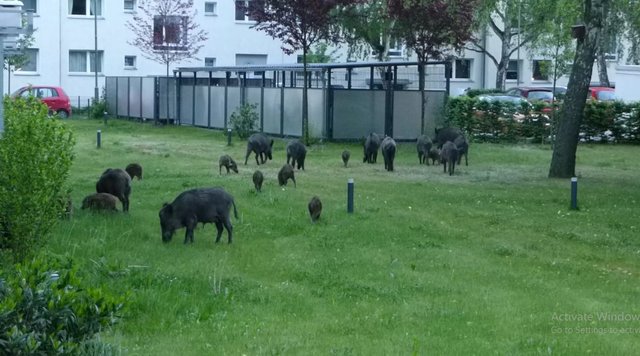
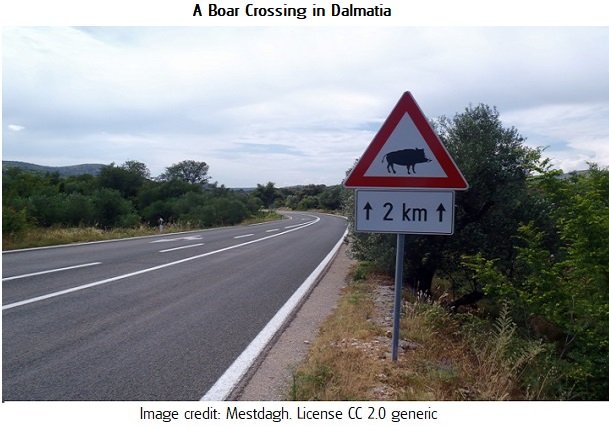
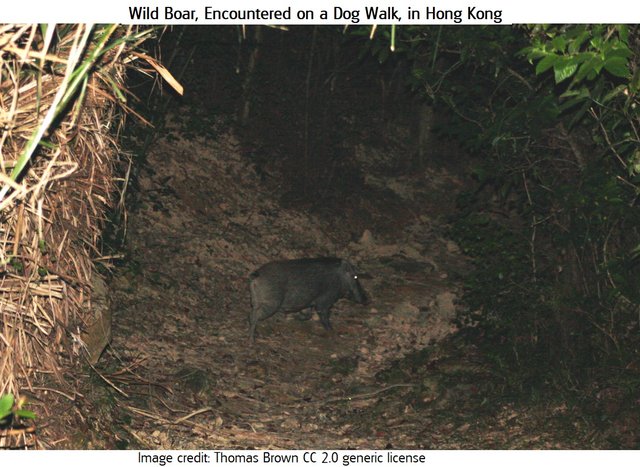
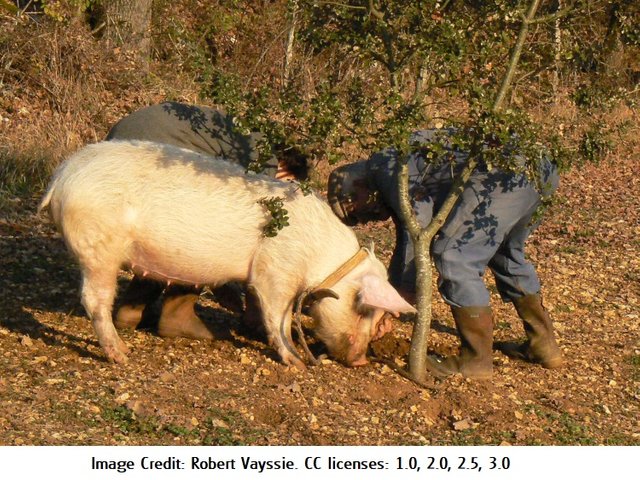
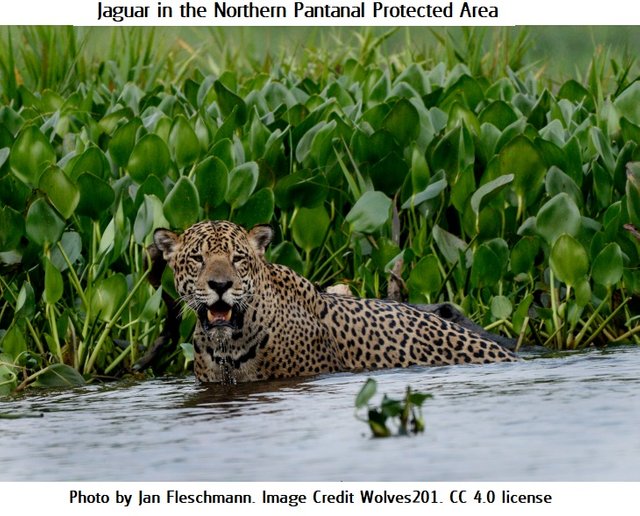
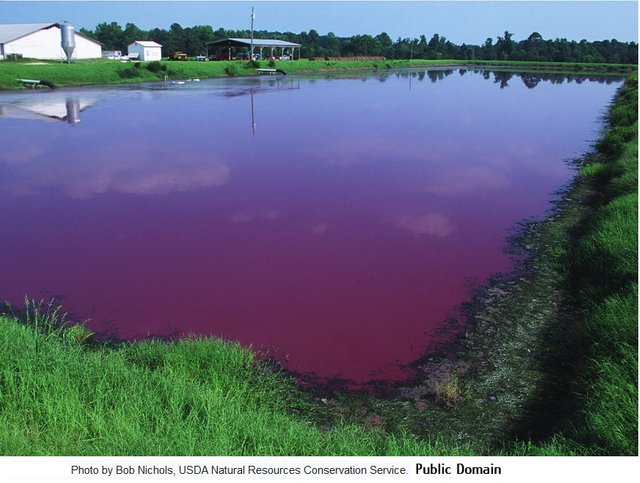
this is the content I missed on steemit. The devolution aspect is so fascinating. Seems as if wildness has its own definition of "wild". Pink and naked is obviously not wild enough ^^
We miss you @lauch3d! There's always a need for integrity and intelligence :)
Yes, pink and naked not enough. They manage to make the poor pig grotesque, but nature resists. Kind of karmic irony, isn't it?
This post has been voted on by the SteemSTEM curation team and voting trail. It is elligible for support from @curie and @minnowbooster.
If you appreciate the work we are doing, then consider supporting our witness @stem.witness. Additional witness support to the curie witness would be appreciated as well.
For additional information please join us on the SteemSTEM discord and to get to know the rest of the community!
Thanks for having used the steemstem.io app and included @steemstem in the list of beneficiaries of this post. This granted you a stronger support from SteemSTEM.
Thank you, SteemSTEM. I appreciate the support, and the acknowledgement.
Hey @agmoore,
thank you for the nice article. I also encountered boars many time face to face, but they haven't attacked me. Actually, they are getting more within the years but now the wolf is back in the wood! Two weeks ago the aunt of my girlfriend found a dead deer. We are not sure whether it has been killed by a wolf or lynx. I could attach a photo of the remainings but I want to prevent that you have to tag your post as NSFW.
Anyway, I like the pigs. I think it is a shame that millions of them will be killed around the globe. Now the wolfs are back maybe our environment comes back to equilibrium.
Let's see!
Resteem and good night
Best
Chapper
Hey Chapper,
Thanks for the tip about the wolves. Looked it up...yes, they're back!--thanks to the military ???
Looks like people are at it again in protected areas and killing them off, but can't get to them on military grounds.
I like the pigs, too. I guess you can tell from my piece.
Have a great day.
Warm regards,
AG
Hey @agmoore, you can find the wolves even in civil areas. It seems like they are coming from Eastern Europe.
Regards
Posted using Partiko Android
😂
My face went from serious to laughing out loud. Thank you!!
Regards AG :)
I'm with you @chappertron, and "The trouble with pigs is people" (@agmoore2). Pigs are so maligned. And eaten! They are intelligent creatures with the potential to be companions, but, but, yes, nature is red in tooth and claw, and we did not invent the carnivore. The food chain evolved before we did. I'm not a vegan, but I won't eat bacon or ham or any pork anymore, even if I can find it nitrate-free. (Oh does it ever smell enticing.) Thank you @agmoore for this post, so comprehensive, I cannot begin to address the many points you made with a "Right on!" but I'll choose this one as especially haunting:
a legacy of the Fukushima and Chernobyl catastrophes. As people moved out of the evacuated communities, boars moved in. They foraged on contaminated plants. Oh karma....
ps. ocd-resteem tag isnt maintained any more, one may use #oc instead... also, do you consider using the #ecotrain tag?
Thank you so much for that tip. I'm pretty good at research, but not that good at negotiating the platform.
same with me, probably... I just try to spread the word and share the little bits of knowledge I've got. here is what I was told about the #ecotrain tag, it has kinda blurry shapes of implementation but nevetheless:
Put this on my gravestone.
Thanks for the namedrop! Super interesting, radioactive pigs, one even has glowing eyes... amazing.
But, if domesticated pigs can breed with wild boar to create 'hybrids', are they not just the same animal? In which case, why don't we just eat all the problematic boars in hong kong of all places? Nothing wrong with a bit of radiation in your pork chop from time to time
Wasn't really a name drop. I think your blog planted the idea of writing my own. I did comment back then that I wouldn't eat pork. Now you know why.
And yeah, they are the same animal. Breeding just makes them fat and ungainly. Also leads to dreadful abuse and disease.
Nothing wrong with a bit of radiation 😆 Can't be worse than what they're turning out now in meat factories anyway.
Hello my dear friend :)
How nice to see one of your posts on my feed. And, what a post! Thank you for taking the time to educate us about what's going on in the swine world. So much of what you write for us here is new to me. Like all your other posts this one had me glued to the screen from the very title.
You led us to learn how pigs become radioactive in a very skilled manner. By the way, I never knew mushrooms and truffles absorb nutrients through the environment rather then roots. But, then again, they belong to a different kingdom than that of plants! So ... I shouldn't be so surprised :P
My limited knowledge about these animals had me believing wild boars were almost exclusive to the Spanish hills and mountains. Quite fascinating to learn how widespread they've become and the reasons underlying it.
Reading about the sick pigs and the consequences of factory farming them was heart breaking. As much as the notion you put forward in your conclusion, which directly explains why things have become like this for these animals. My goodness, what is going to happen to the planet? When we look closely at what goes on the picture that comes to mind about the future is not a very bright one :/
Ps: I am going to share with my brother the Brazilian studies you mentioned here :)
Once again my dear friend, thank you for constantly educating us about our planet, our animals as well as their history! Your work is beautiful and as usual ... so richly illustrated :D
Wish much love & admiration from across the ocean :*
Your Brazilian friend <3
Dear Abigail,
Thank you for those kind words. You make my day. It was a bit dreary this morning, but not now :)
This information was all new to me, though of course I was aware of the factory farms. It's been years since I've eaten pork. Can't bear to do it, knowing what the pigs go through.
As for Brazil, I'm so impressed by how advanced the research is there in so many areas. I remember my ant article...Brazil was in the vanguard of that research. And here, researchers in Brazil are the only ones who seem to have figured out how precisely the environment and the pigs are related (when they need forest cover, how close water has to be, etc.)
I hope you are well, not too busy, and that every day is a rich adventure.
Love, appreciation and respect from chilly New York,
AG
I’m pleased to hear things are not so dreary anymore in chilly New York 😊 Things have been busy here. But everything is fine :) I love this time of the year.
It’s raining now, the fire is lit and I am looking for images to illustrate my next Steemit post...
Much love to you & be well my dear friend :)
🌞 🌼🌻🌻
🐖🐖
💛
1st abstract almost looked like a fiction to me! but not the rest pf the article. its deadly serious.
Sorry to do a switch on you... I try to make the blogs entertaining, no matter how serious the subject. I used to teach and learned people really don't want to listen. They certainly don't like a lecture. So I sprinkle a little sugar on top :)
aha, it came out intentional? sweet!
:)
This is an excellent and comprehensive post. I'd be interested to hear more about the radioactive pigs, but all topics you covered are worth reading!
Thank you! Yes, I wanted to say more about the pigs that people might eat!! unaware that the meat is not wholesome. But posts get very long and readers do not have patience.
Thank you so much for those kind words.
OMG my friend! Pigs, pigs and more pigs. Another one of your interesting posts that is chocked full of information that I didn't know. It is always a learning experience with you and I love that! I stopped eating pork many, many years ago and after reading this, I am so glad that I did. This is another reason why there are so many vegetarians now. Ticks and vampire bats are the worst for spreading diseases. The numbers in this post are staggering and look at all of the harm that we have done to our beautiful planet and all of nature. So sad. This brought me back to another childhood memory. My parents took me and my brother on vacation when I was 9 years old and it was my first experience of seeing a boar. I thought it was the ugliest creature I had ever seen. Thankfully, it was only the head mounted on a wall. The place we stayed at was called...are you ready for this...Boar's Head Inn. I also remember going to a pond located at the Inn and catching frogs all day long in the hot sun. I drank cold water real fast and the world around me was spinning, and I couldn't stand up. The doc said that I had heat stroke. I was so sick. Now back to your post. What a great job you did with your extra accent pictures. It was very pleasing to my eyes. The only thing that is missing is at least one photo taken by you. LOL! And look at all of your sources. I am in awe!!! I can;t imagine how many hours you put in but what I do know is that you are dedicated to sharing nothing but the best!
Thank you so much for you gift to support my butterfly contest. It sure was a pleasant surprise and I am grateful. Hugs! I am looking forward to more of your photos! : )
Thank you so much for high praise! Your affinity for nature makes your words all the more meaningful :)
Boar's Head Inn??? Groan....Memories of childhood. I've never been tolerant of sun myself. Tend to have a lower threshold than those around me. Have you ever experienced this since?
I love your butterfly contest. It brings people together and makes them happy. It's a service. Yesterday my son dug out a camera and showed me how to use it...not a cell phone. A real camera. So, maybe pictures will be coming.
Today is Thursday. Time to check you blog. Hope Pachino is well, or at least peaceful.
Warm regards, AG
It sounds like you have fair skin like me. Thankfully, I never had heat stroke again but I did have sun poisoning many, many moons ago on my honeymoon. I had blisters all over my body, hot and cold chills and could barely stand the bed sheet over my body. I was in so much pain I couldn't move for days. But I still love the sun! The hotter the better because it helps my Fibro pain.
OMG! I am so excited to hear about your camera and I can't wait to see your photos. I think you will get hooked. I don't have a cell phone. The photos I see that are taken using the cell phones are amazing.
Pachino is doing well. I just took him out for some fresh, cold air and he came right back inside and is on my lap right now. You said that you had a cat. How old is yours?
Thanks for your praises of my butterfly contest. I do hope it makes people happy. The photos are incredible and I love seeing butterflies and other insects from around the world.
Stay warm AG and have a great weekend! : )
Thank you!
My skin is fair--partly because I never go out in the sun :)
UV of any kind makes me sick. That's an autoimmune thing. I try to get indirect sunlight, a warm glow, but not for too long. Just a few minutes.
I haven't had time to check out my camera. I'm excited also.
Glad to see you getting support for your contest. It is a great place for people to meet and share. Next week, for sure, I'll have something.
Be well and peaceful, @whatisnew.
Your friend, AG
Edit--Oh, and about the cat: right now my daughter and son do the hands--on care of several cats...some indoors and some out. I pay expenses and enjoy their company :))
I have never heard of UV making a person sick. Sorry to hear that. Do you want to hear something crazy? My eyes burn and get red when I am in a room that uses fluorescent light bulbs and my eye doctor told me that I am allergic to them. I have never heard of that before.
The support that I got was surprising and makes my contest exciting. Thank you for your support and your kind words. You are going to have something to enter my contest? Now that is exciting! : )
How nice of you to help out with the cats. They sure do bring much joy!
Have a great week my friend! : )
Congratulations @agmoore2! You have completed the following achievement on the Steem blockchain and have been rewarded with new badge(s) :
You can view your badges on your Steem Board and compare to others on the Steem Ranking
If you no longer want to receive notifications, reply to this comment with the word
STOPDo not miss the last post from @steemitboard:
Vote for @Steemitboard as a witness to get one more award and increased upvotes!